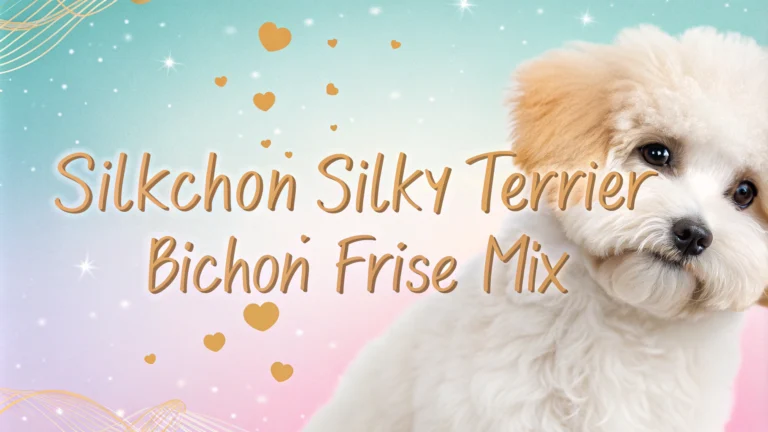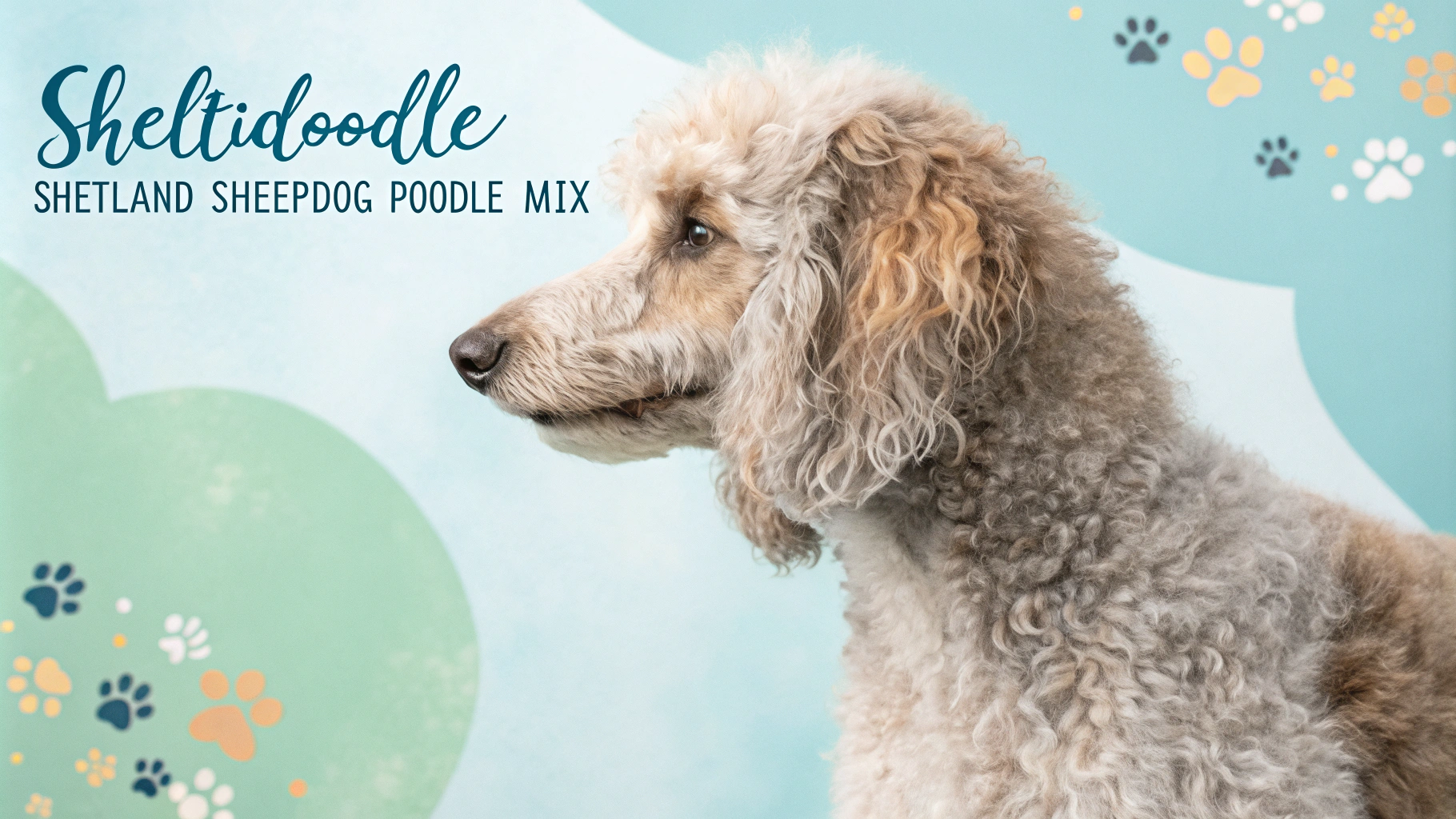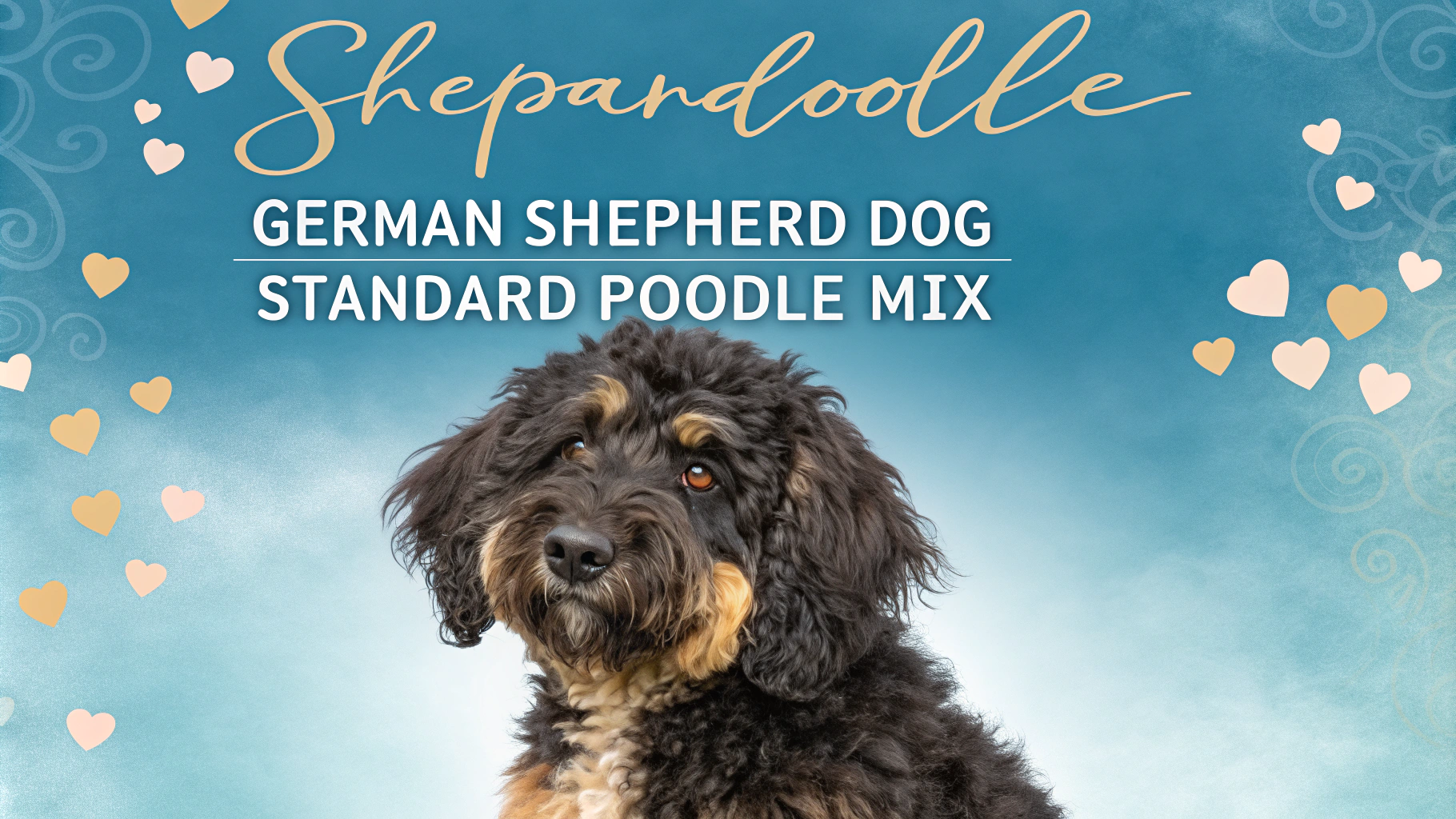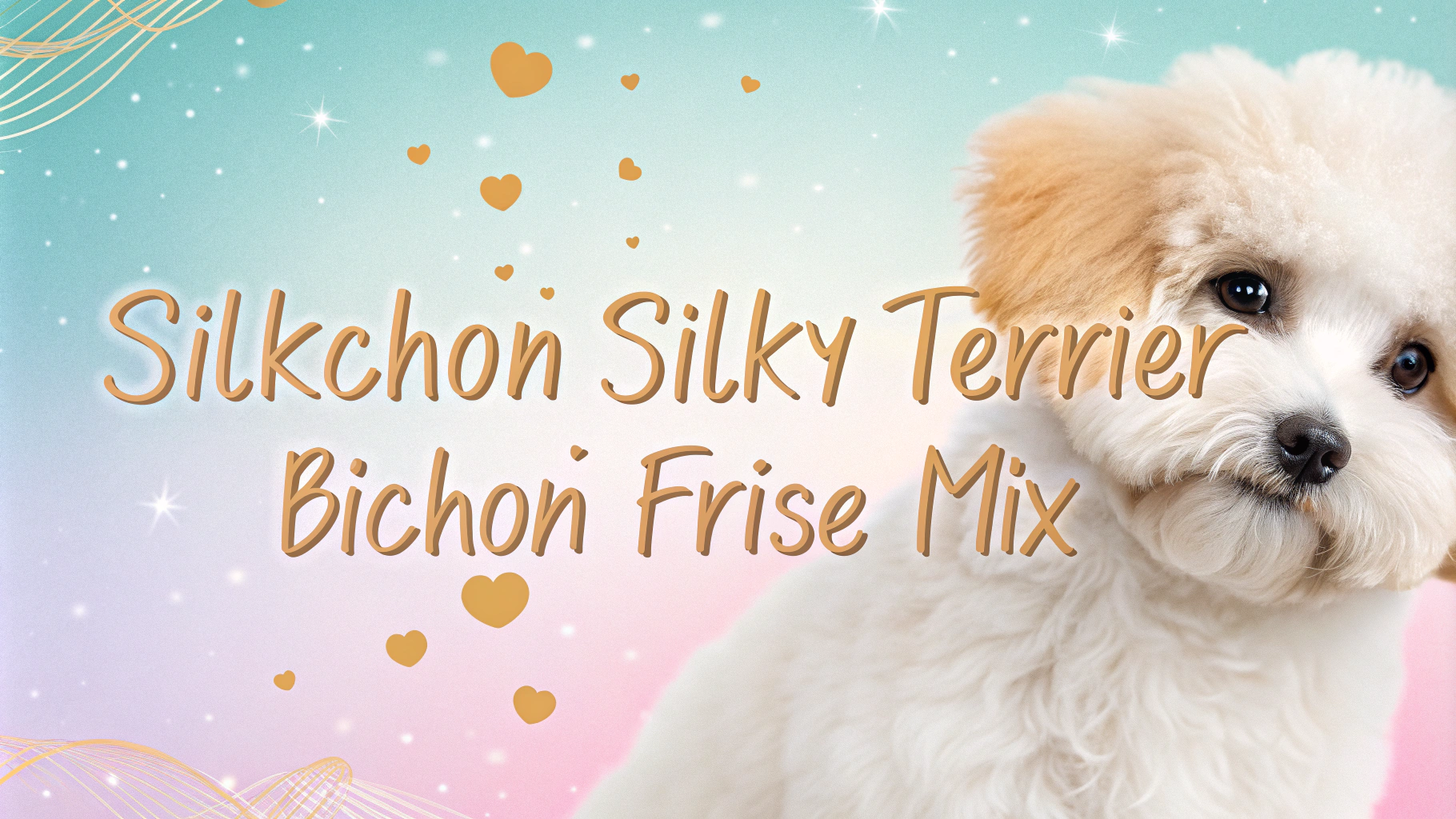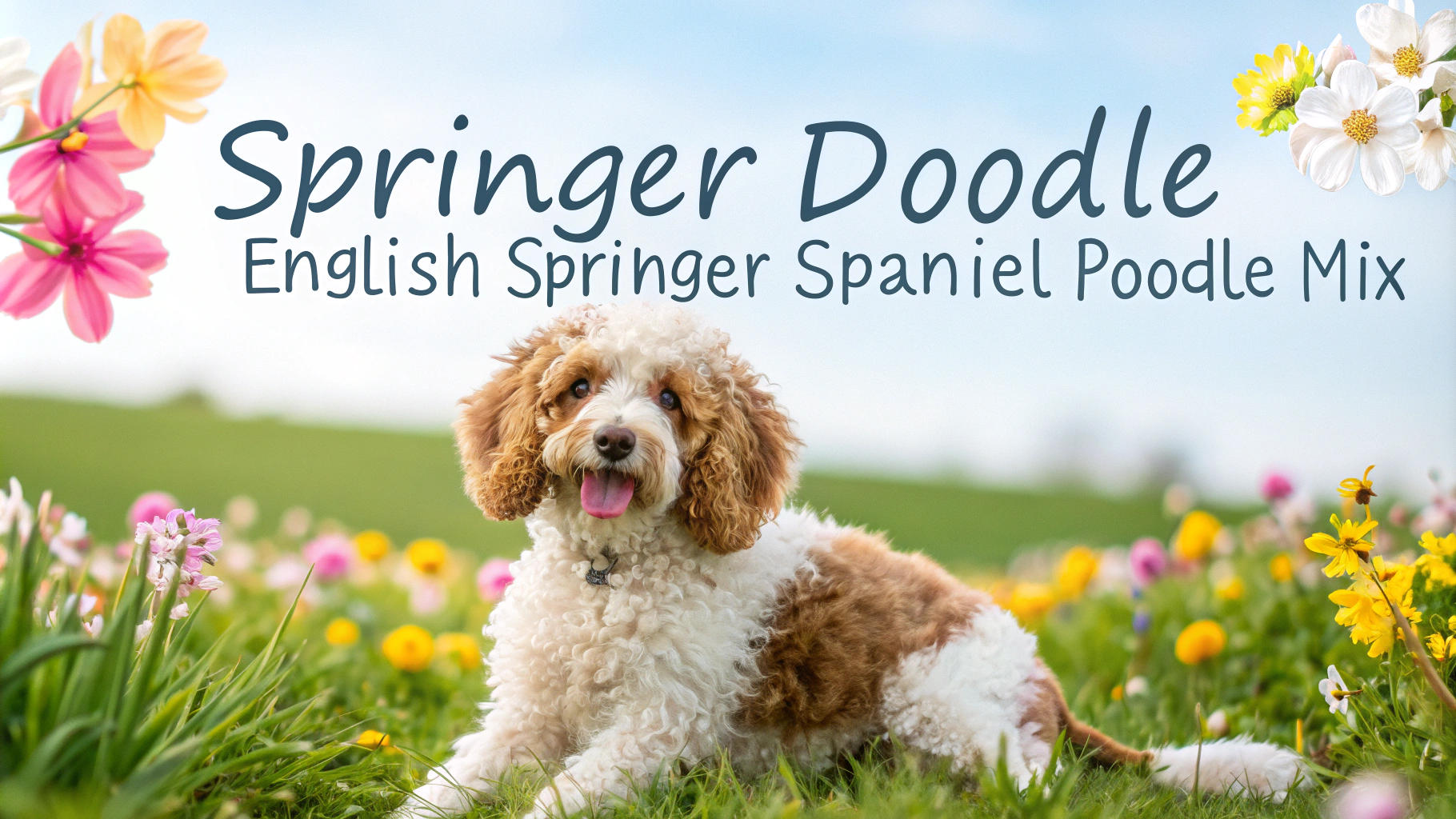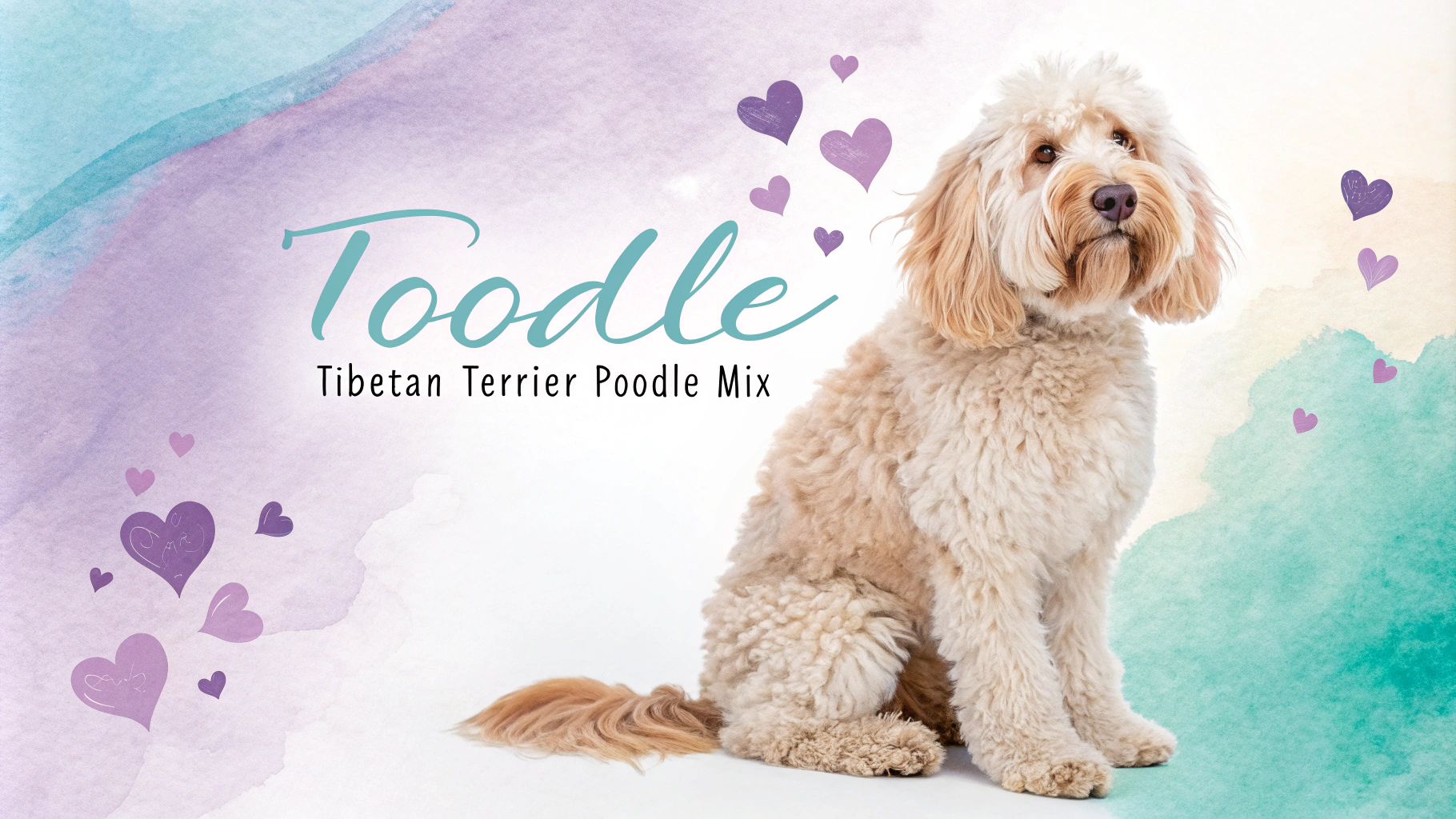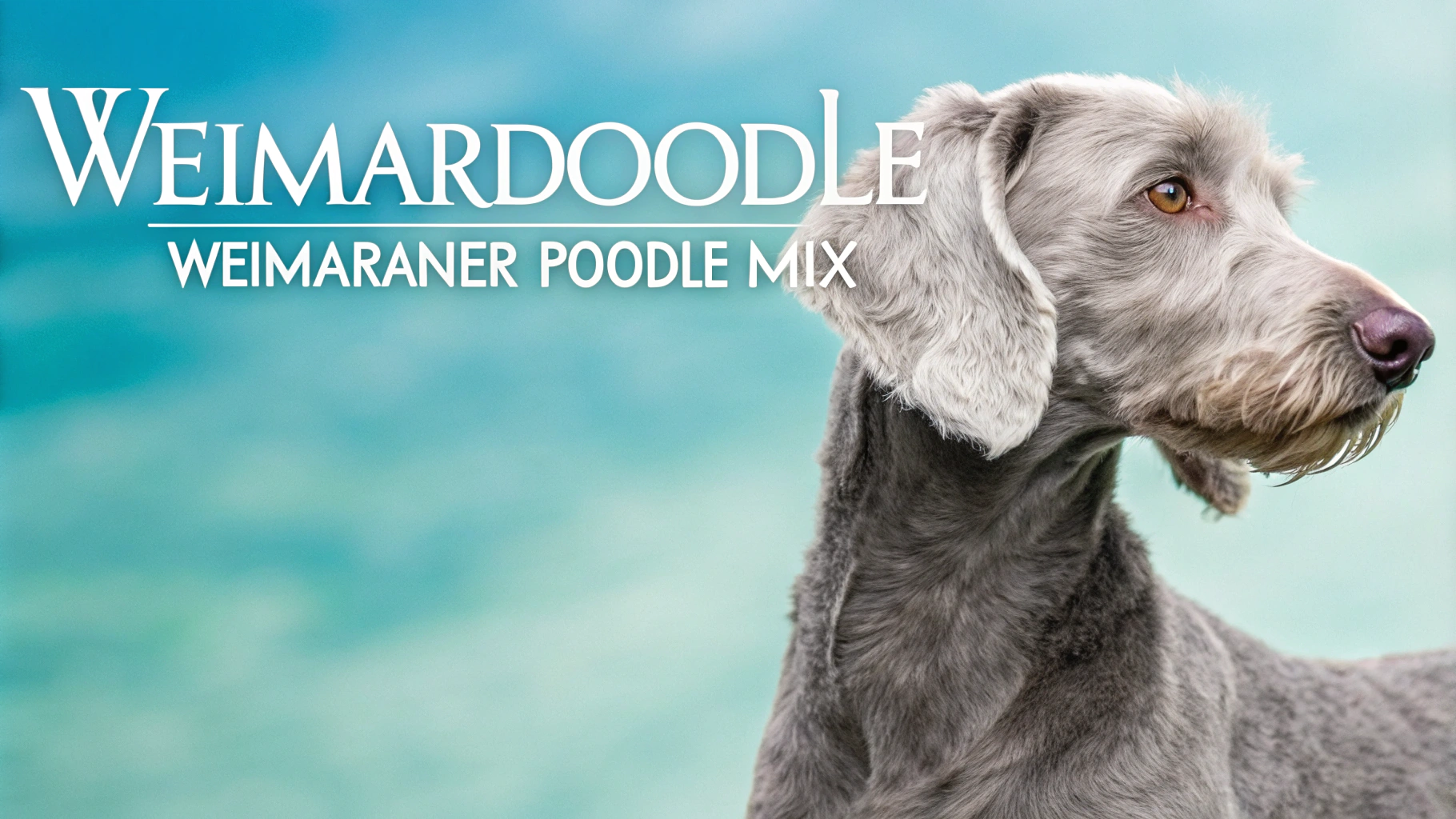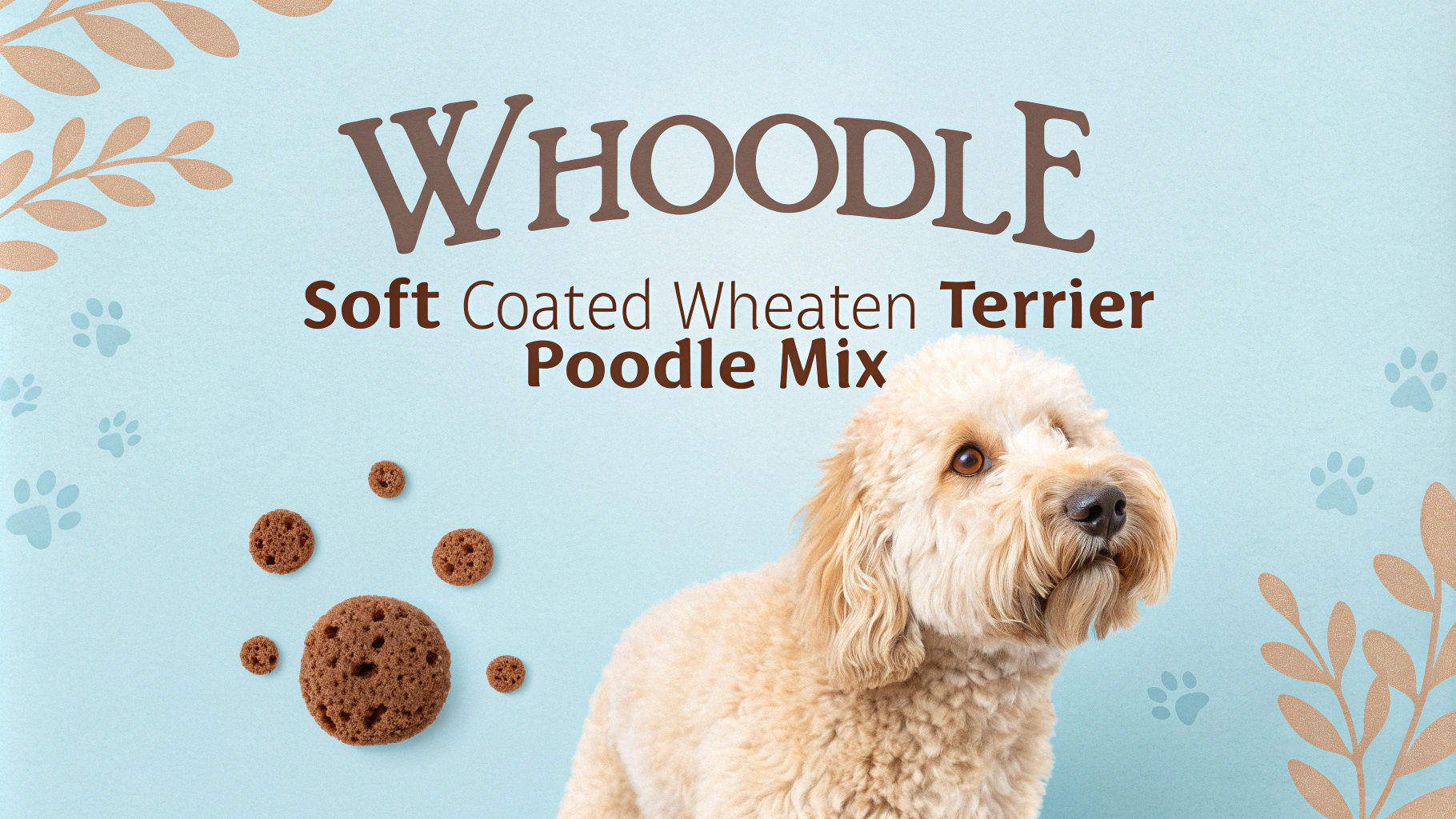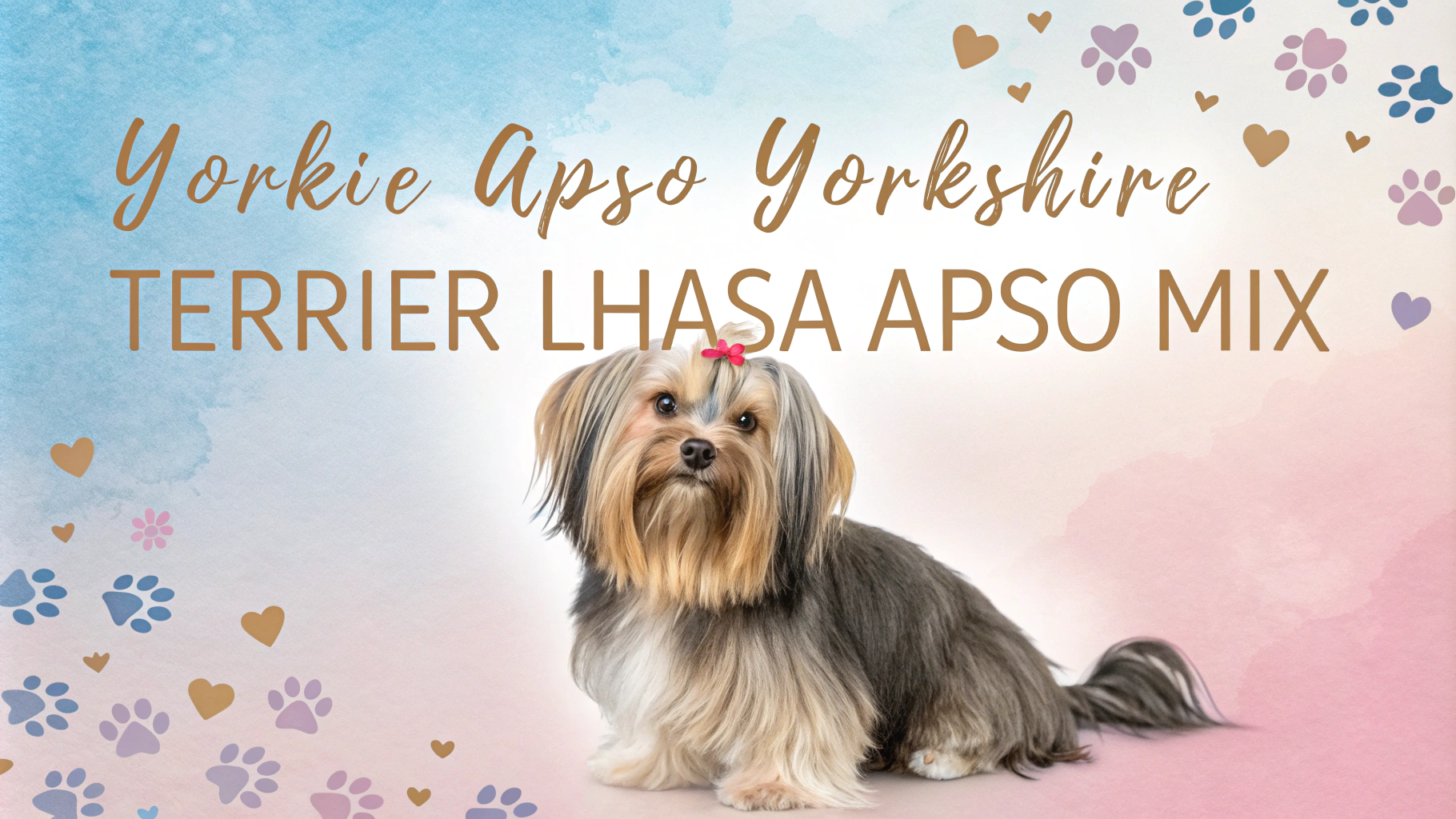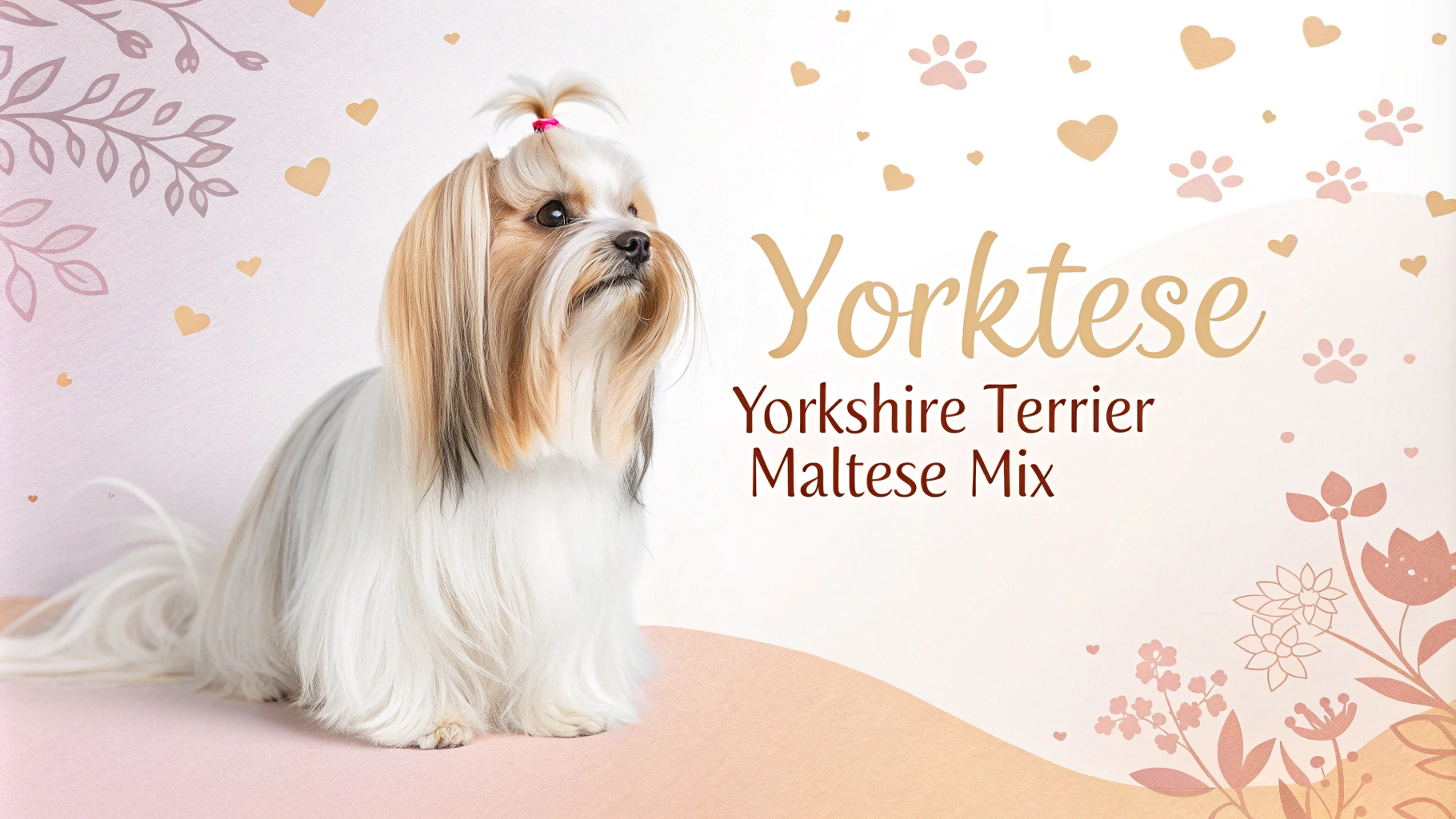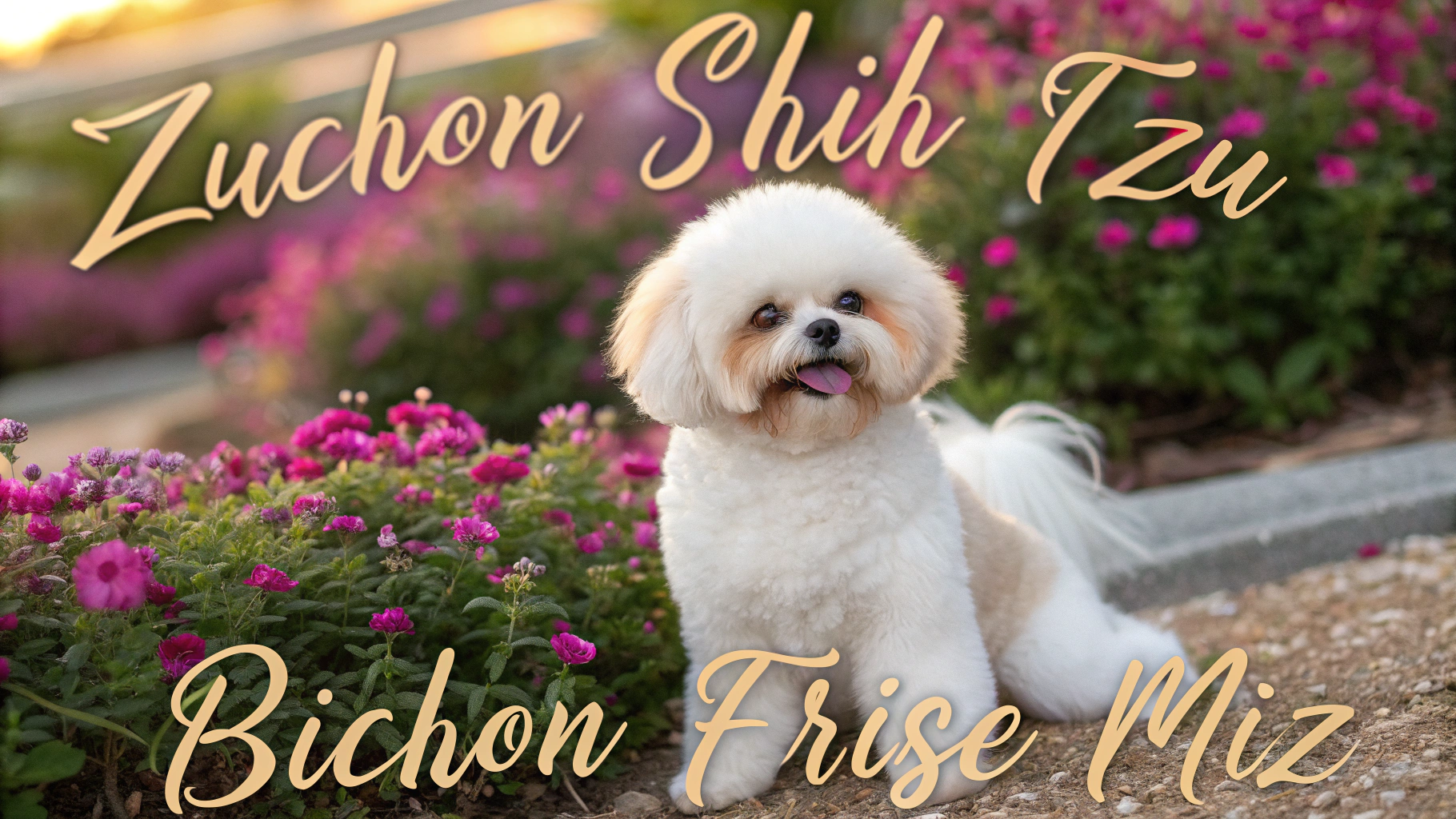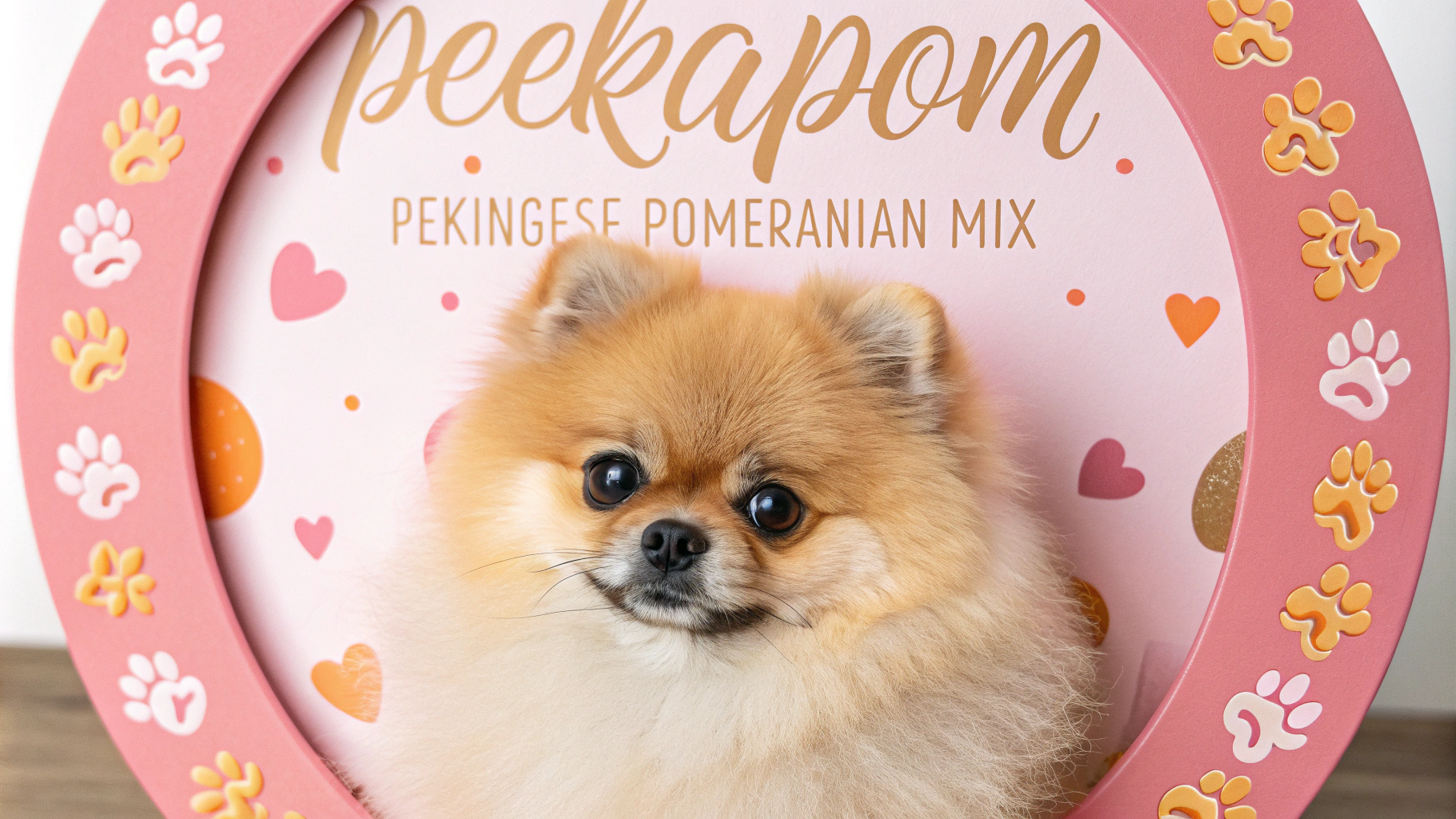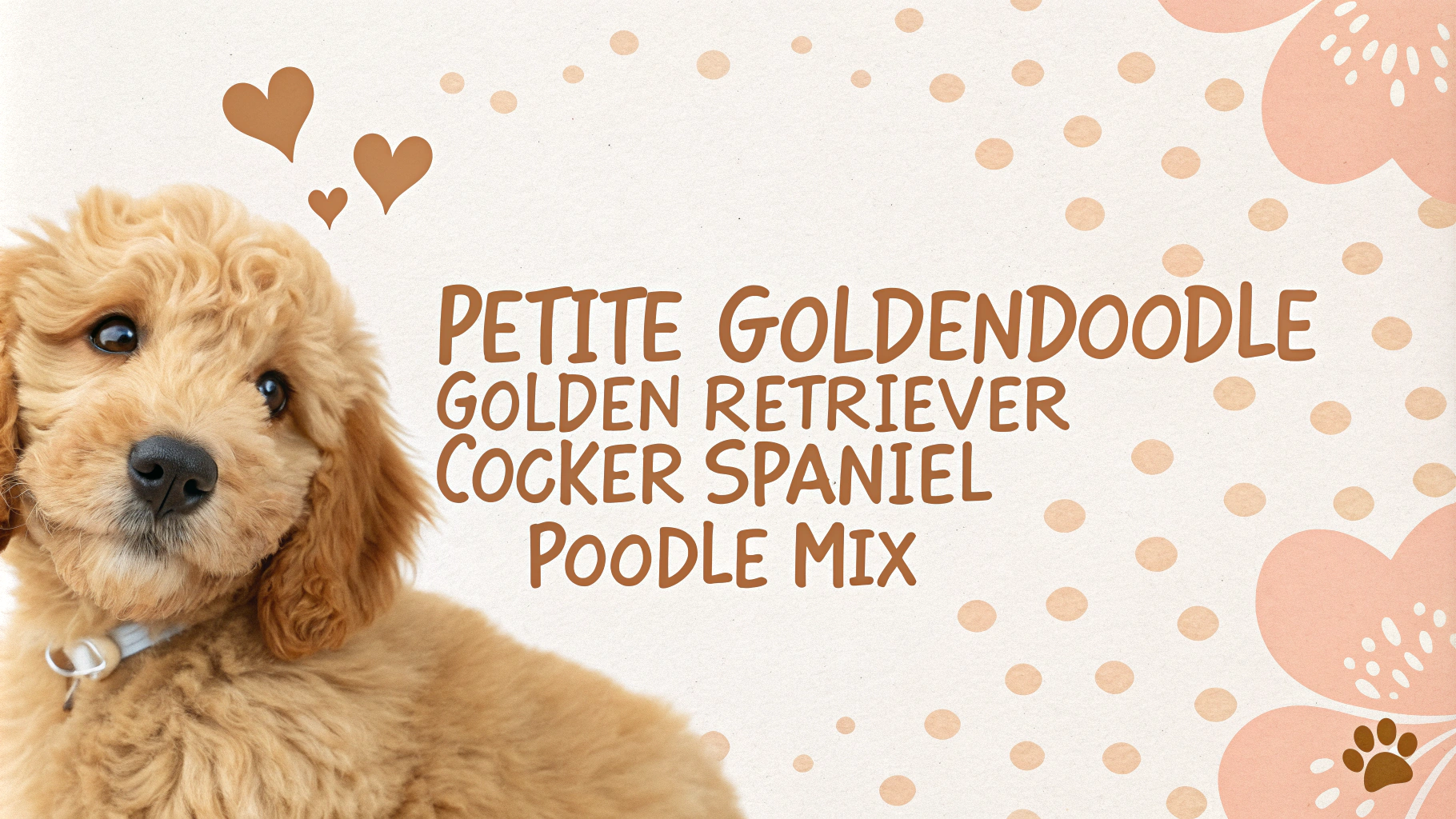The Silkchon is a delightful designer dog breed resulting from the cross between a Silky Terrier and a Bichon Frise. This hybrid combines the intelligence and spunk of the Silky Terrier with the affectionate and playful nature of the Bichon Frise. Silkchons are known for their soft, silky coats and charming personalities, making them popular companions for various households. These small-sized dogs typically inherit the best traits from both parent breeds, resulting in a loving, energetic, and adaptable pet.
Key Facts
- Size: Small (8-12 inches tall, 6-12 pounds)
- Lifespan: 12-15 years
- Coat: Long, silky, and often hypoallergenic
- Colors: Various, including white, cream, tan, and black
- Temperament: Affectionate, playful, and intelligent
- Exercise needs: Moderate
- Grooming: High maintenance
- Good with children: Yes, when properly socialized
- Good with other pets: Generally yes, but early socialization is important
- Barking tendency: Moderate to high
Character Traits
Silkchons are known for their delightful blend of personality traits inherited from both parent breeds. They are typically affectionate, playful, and intelligent dogs that form strong bonds with their families. These small companions are often described as charming and cheerful, with a zest for life that’s infectious to those around them. Silkchons tend to be alert and sometimes vocal, making them excellent watchdogs despite their small size.
Their Silky Terrier heritage often contributes to a confident and curious nature, while the Bichon Frise influence adds a gentle and sociable aspect to their personality. Silkchons are generally good with children and other pets when properly socialized, though they may sometimes display a stubborn streak. These dogs thrive on human companionship and can be prone to separation anxiety if left alone for long periods. Their adaptable nature makes them suitable for various living situations, from apartments to houses with yards.
History & Origins
The Silkchon is a relatively new designer dog breed, likely originating in the late 20th or early 21st century when crossbreeding became popular. While the exact origins of the Silkchon are not well-documented, understanding the history of its parent breeds provides insight into this hybrid’s background.
The Silky Terrier, one parent breed, originated in Australia in the late 19th century. It was developed by crossing Yorkshire Terriers with Australian Terriers, resulting in a small but tough dog with a silky coat. Silky Terriers were bred for both companionship and vermin control.
The Bichon Frise, the other parent breed, has a long history dating back to the 13th century. Originating in the Mediterranean region, these small white dogs were favorites of European nobility and were often featured in Renaissance paintings. Bichons are known for their cheerful disposition and fluffy white coats.
The Silkchon was likely created to combine the Silky Terrier’s alertness and intelligence with the Bichon Frise’s affectionate nature and hypoallergenic coat. While not recognized by major kennel clubs as a purebred, the Silkchon has gained popularity as a loving and adaptable companion dog.
Health Concerns
The Silkchon, being a mix of Silky Terrier and Bichon Frise, may inherit health issues common to both parent breeds. Potential health concerns include:
- Patellar luxation
- Hip dysplasia
- Eye problems (cataracts, progressive retinal atrophy)
- Allergies
- Dental issues
Regular veterinary check-ups, dental cleanings, and eye examinations are crucial for maintaining the Silkchon’s health. Responsible breeding practices can help reduce the risk of inherited conditions. It’s important to obtain health clearances for both parent breeds when considering a Silkchon puppy.
Exercise Needs
Silkchons are generally active and energetic dogs that require moderate daily exercise. Recommended exercise activities include:
- Daily walks (30-45 minutes)
- Indoor play sessions
- Fetch games
- Agility training
Mental stimulation is as important as physical exercise for this intelligent breed. Puzzle toys and training sessions can help keep their minds engaged. While they have bursts of energy, Silkchons can also adapt to a more relaxed lifestyle, making them suitable for various households.
Space Requirements
Silkchons are adaptable dogs that can thrive in various living situations. Their small to medium size makes them suitable for apartment living, provided they receive adequate exercise and mental stimulation. However, they do appreciate having access to a small yard or outdoor space for play and exploration.
Indoor living is preferable for Silkchons due to their attachment to their families and potential sensitivity to extreme temperatures. A comfortable indoor space with room for play and rest is essential. While they can adapt to smaller spaces, providing an area for them to move around freely is beneficial for their overall well-being.
Nutrition & Feeding
A balanced diet is crucial for maintaining the health and vitality of a Silkchon. Key nutritional considerations include:
- High-quality, age-appropriate dog food
- Proper portion control to prevent obesity
- Balanced mix of proteins, fats, and carbohydrates
- Adequate hydration
The amount of food should be adjusted based on the dog’s age, size, activity level, and metabolism. Small, frequent meals (2-3 times daily) are often recommended for small breeds like the Silkchon. Consult with a veterinarian to determine the best feeding schedule and diet plan for your individual Silkchon, as nutritional needs may vary.
Grooming Tips
The Silkchon requires regular grooming to maintain its soft, silky coat and prevent matting. Brush your Silkchon’s coat at least 3-4 times a week using a slicker brush or pin brush to remove tangles and distribute natural oils. Pay special attention to areas prone to matting, such as behind the ears, under the legs, and around the tail. Professional grooming every 6-8 weeks is recommended to keep the coat in optimal condition and maintain a neat appearance.
Bathe your Silkchon every 3-4 weeks or as needed, using a mild dog shampoo to avoid drying out their skin. Regularly check and clean their ears to prevent infections, and trim their nails every 2-3 weeks. Brush their teeth several times a week to maintain good oral hygiene. During shedding seasons, which may be minimal due to their low-shedding coat, increase brushing frequency to help remove loose hair.
Training Approach
Silkchons are generally intelligent and eager to please, making them relatively easy to train. However, they can inherit the stubborn streak of the Silky Terrier, so consistency and patience are key. Use positive reinforcement techniques such as treats, praise, and play to motivate your Silkchon during training sessions. Keep training sessions short (5-10 minutes) and fun to maintain their interest and prevent boredom.
Early socialization is crucial for Silkchons to develop into well-rounded adults. Expose them to various people, animals, and environments from a young age. Focus on basic obedience commands like sit, stay, come, and leave it. Silkchons may have a tendency to bark, so teaching a “quiet” command can be beneficial. Housetraining may require extra patience, as small breeds can sometimes be challenging in this area. Crate training can be an effective method for both housetraining and providing a safe space for your Silkchon.
